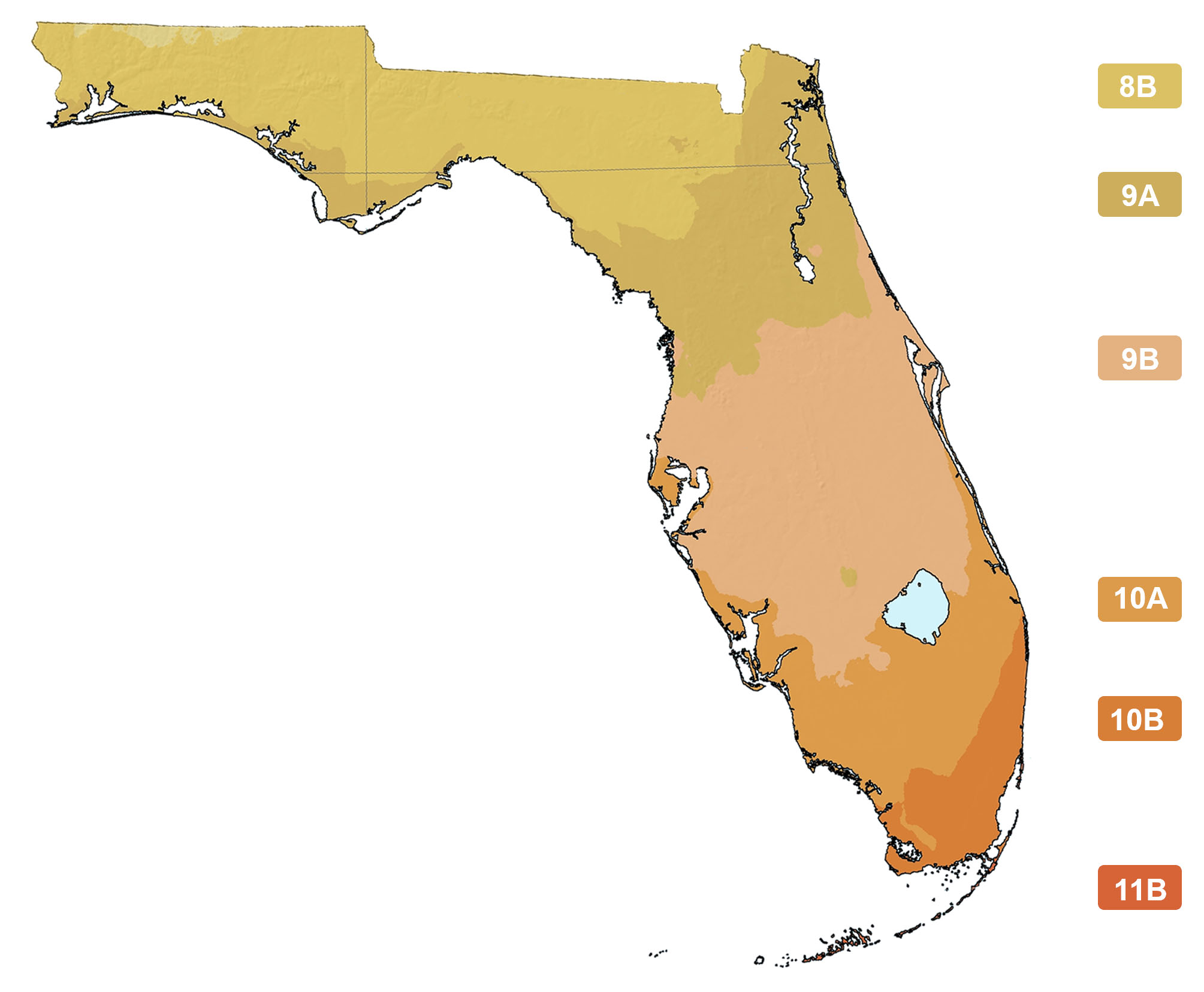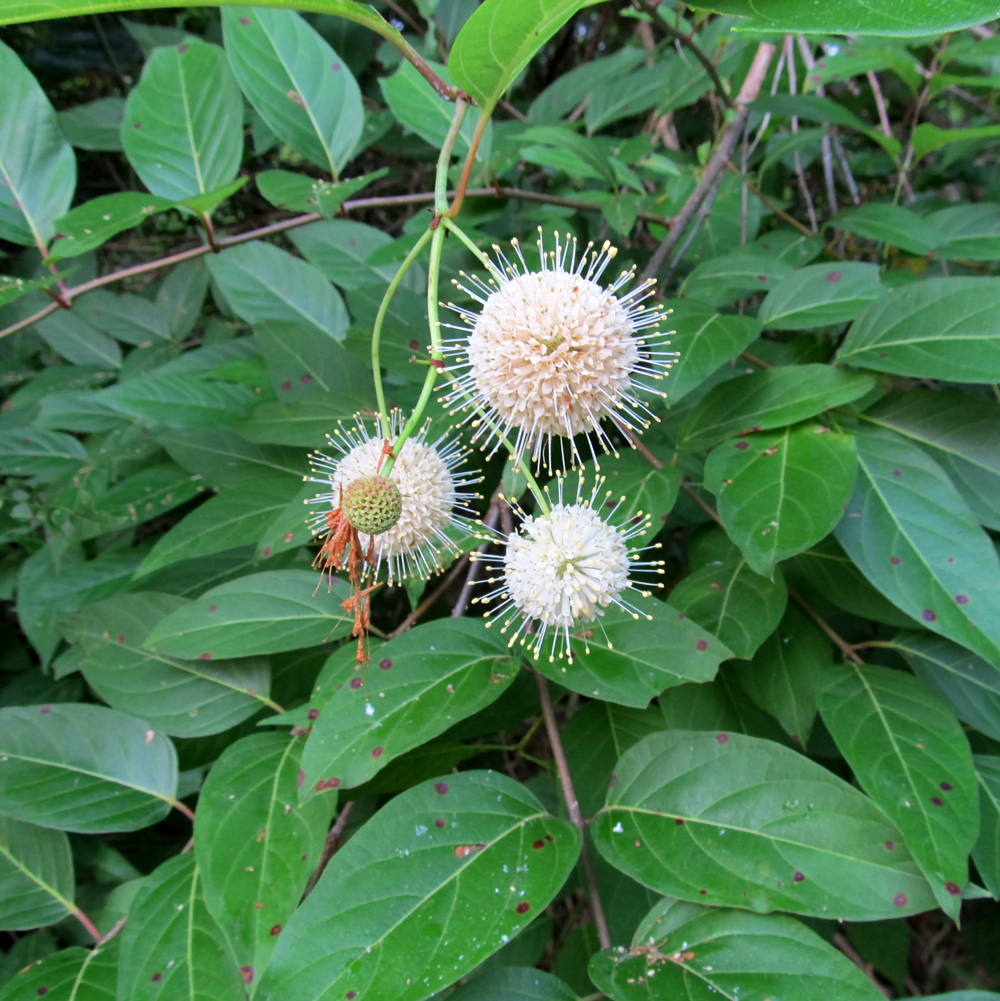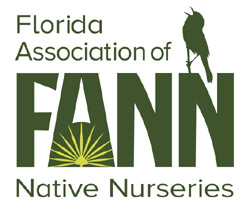Cephalanthus occidentalis
Photographs belong to the photographers who allow use for FNPS purposes only. Please contact the photographer for all other uses.
Buttonbush
Rubiaceae
Plant Specifics
| Form: | Shrub | |
| Size: | 5 to 20 ft tall by 4 to 8 ft wide | |
| Life Span: | Long-lived perennial | |
| Flower Color: | White | |
| Fruit Color: | Brown | |
| Phenology: | Deciduous. Blooms in late spring. Fruits ripen in summer. Lifespan likely >50 yrs (Nelson). | |
| Noted for: | Aroma, fragrance, Showy flowers, Showy fruits |
Landscaping
| Recommended Uses: | Wetlands and wetland edges as a specimen plant with a pleasing multi-stemmed vase-shape. | ||||||||||||||||||||||||||||||||||||||||||
| Considerations: | Foliage is poisonous to livestock and humans. | ||||||||||||||||||||||||||||||||||||||||||
| Propagation: | Seed or hardwood cuttings. Seed does not need pre-treatment. | ||||||||||||||||||||||||||||||||||||||||||
| Availability: | Native nurseries, FNPS plant sales, Seed, Specialty providers | ||||||||||||||||||||||||||||||||||||||||||
| Light: | Full Sun, Part Shade | ||||||||||||||||||||||||||||||||||||||||||
| Moisture Tolerance: |
always floodedextremely dry |
||||||||||||||||||||||||||||||||||||||||||
| (Stays Wet ----- to ----- Usually moist, occasional inundation) | |||||||||||||||||||||||||||||||||||||||||||
| Moisture Tolerance: | Stays Wet ----- to ----- Usually moist, occasional inundation | ||||||||||||||||||||||||||||||||||||||||||
| Salt Water Flooding Tolerance: | Not salt tolerant of inundation by salty or brackish water. | ||||||||||||||||||||||||||||||||||||||||||
| Salt Spray/ Salty Soil Tolerance: | Low/no tolerance of salty wind or direct salt spray | ||||||||||||||||||||||||||||||||||||||||||
| Soil or other substrate: | Clay, Loam, Organic material (muck), Sand | ||||||||||||||||||||||||||||||||||||||||||
| Soil pH: | Slightly acidic to calcareous | ||||||||||||||||||||||||||||||||||||||||||
Ecology
| Wildlife: |
Deer browse the foliage. Ducks and other birds including jays, cardinals, nuthatches, titmice, warblers, and mockingbirds consume the seed. | |
| Insects: | Host plant to several moths including titan sphinx (Aellopos titan) and hydrangea sphinx (Darapsa versicolor) moths (https://xerces.org/blog/planting-for-pollinators-button-bush). Flowers are very attractive to a variety of insects including butterflies and bees. | |
| Native Habitats: | Marshes, swamps, river floodplains |
Distribution and Planting Zones
Natural Range in Florida
USDA Zones
Suitable to grow in:
10A 10B 11 8A 8B 9A 9B

USDA zones are based on minimum winter temperatures
Comments
| Ethnobotany: | Has been used medicinally though there are potential issues. Dried leaves may be poisonous to pets. | |
| General Comments: | Noted for it's round satellite "ball" flowers and round "button" fruits. Fragrant. Sources disagree on salt tolerance of this plant. |








